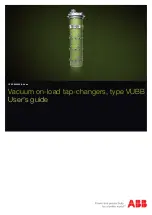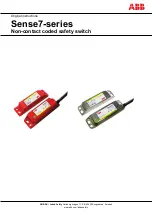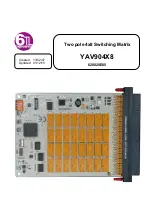
Overview
1 - 9
1.2.2.4 Proxy-ARP
Proxy ARP is provided for MU's whose IP address is known. The WLAN generates an ARP reply on behalf of a MU (if the
MU's IP address is known). The ARP reply contains the MAC address of the MU (not the MAC address of switch). Thus,
the MU does not awaken to send ARP replies (increasing MU battery life and conserving wireless bandwidth).
If an MU goes into PSP without transmitting at least one packet, its Proxy ARP will not work.
1.2.2.5 HotSpot / IP Redirect
A hotspot is a Web page users are forced to visit before they are granted access to the Internet. With the advent of Wi-Fi
enabled client devices (such as laptops and PDAs) commercial hotspots are common and can be found at many airports,
hotels and coffee shops. The hotspot re-directs the user’s traffic on hotspot enabled WLANs to a web page that requires
them to authenticate before granting access to the WLAN. The following is a typical sequence for hotspot access:
1. A visitor with a laptop requires hotspot access at a site.
2. A user ID/ Password and hotspot ESSID is issued by the site receptionist or IT staff.
3. The user connects their laptop to this ESSID.
4. The laptop receives its IP configuration via DHCP.
5. The user opens a Web browser and connects to their home page.
6. The switch re-directs them to the hotspot Web page for authentication.
7. The user enters their User ID/ Password.
8. A Radius server authenticates the user.
9. Upon successful authentication, the user is directed to a Welcome Page that lists (among other things) an Acceptable
Use Policy.
10.The user agrees to the usage terms and is granted access to the Internet. (or other network services).
To setup a hotspot, create a WLAN ESSID and select Hotspot authentication from the Authentication menu. This is simply
another way to authenticate a WLAN user, as it would be impractical to authenticate visitors using 802.1x. For information
on configuring a hotspot, see
Configuring Hotspots on page 4-36
.
1.2.2.6 IDM (Identity Driven Management)
Radius authentication is performed for all protocols using a Radius-based authentication scheme (such as EAP). Identity
driven management is provided using a Radius client. The following IDMs are supported:
•
User based SSID authentication
— Denies authentication to MUs if associated to a ESSID configured differently by
their Radius server.
• U
ser based VLAN assignment
— Allows the switch to extract VLAN information from the Radius server.
•
User based QoS
— Enables QoS for the MU based on settings within the Radius Server.
1.2.2.7 Voice Prioritization
The switch has the capability of having its QoS policy configured to prioritize network traffic requirements for associated
MUs. Use QoS to enable voice prioritization for devices using voice as its transmission priority.
Voice prioritization allows you to assign priority to voice traffic over data traffic, and (if necessary) assign legacy voice
supported devices (non WMM supported voice devices) additional priority.
Currently voice support implies the following:
•
Spectralink voice prioritization
- Spectralink sends packets that allow the switch to identify these MU's as voice MU's.
Thereafter, any UDP packet sent by these MU's is prioritized ahead of data.
Summary of Contents for WiNG 4.4
Page 1: ...Motorola Solutions WiNG 4 4 SYSTEM REFERENCE GUIDE ...
Page 2: ......
Page 3: ...MOTOROLA SOLUTIONS WING 4 4 SYSTEM REFERENCE GUIDE 72E 157062 01 Revision A January 2012 ...
Page 6: ...iv WiNG 4 4 Switch System Reference Guide ...
Page 14: ...xii WiNG 4 4 Switch System Reference Guide ...
Page 48: ...1 32 WiNG 4 4 Switch System Reference Guide ...
Page 58: ...2 10 WiNG 4 4 Switch System Reference Guide ...
Page 280: ...4 176 WiNG 4 4 Switch System Reference Guide ...
Page 352: ...5 72 WiNG 4 4 Switch System Reference Guide ...
Page 476: ...6 124 WiNG 4 4 Switch System Reference Guide ...
Page 506: ...7 30 WiNG 4 4 Switch System Reference Guide ...
Page 532: ...8 26 WiNG 4 4 Switch System Reference Guide ...
Page 536: ...A 4 WiNG 4 4 Switch System Reference Guide ...
Page 544: ...B 12 WiNG 4 4 Switch System Reference Guide ...
Page 558: ...B 26 WiNG 4 4 Switch System Reference Guide ...
Page 574: ...C 16 WiNG 4 4 Switch System Reference Guide ...
Page 596: ...E 4 WiNG 4 4 Switch System Reference Guide ...
Page 597: ......
















































